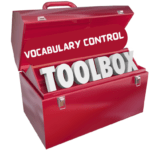Different parts of a book can be explained in three ways:
- Part I: The initial or primary part (Preliminaries)
- Part II: Main body or text matter
- Part III: Subsidiaries

Part I- The initial or primary part (Preliminaries)
- Book Jacket: The book jacket is the cover of the book. It makes the book visually appealing and draws people in. Nowadays, cover design has become an art form. Many illustrators have gained fame through their cover designs. Covers can be abstract, or they can feature images that express the essence of the book. Their primary purpose is to protect the book from dust and dirt. Eye-catching colors appeal to children and attract reader’s attention. Currently, there is a lot of software for drawing book covers. . All this software gives beautiful book cover designs.
- Cover: It is made of cardboard so that the book is durable, and the book is held together with the help of a cover.
- End Paper: The white paper that is glued to the book cover is considered the last page.
- Flyleaf: Flyleaf is attached to the last page. It’s basically a blank white page.
- Half-title page: A page containing only the title of the book is called a half-title page. It is also called a “bastard title.”.
- Frontispiece: A valuable resource of books on Frontispiece. The most expensive and significant image of the book is placed on the frontispiece. This page always faces the title page. That is, the page before the title page is called the frontispiece page and is so important that it is mentioned in the catalog entry.
- Title Page: The title page is always on the right side of the book. This is another important page. The information included in the book catalog is taken from this page. This page records the author’s name, full title of the book, place of publication, publisher’s name, and date of publication. In cases of translation, the name of the translator is written; in cases of editing, the name of the editor is written. This page is called the “Official Page” of the book.
- Back of the title Page: This is called the printer’s page or printer’s space. On this page, the printer’s name, address, edition (if any), copyright date, catalog printed in the book, or catalog pre-publication (CIP) of the book are printed. ISBN is referenced.
- Dedication Page: The name of this page is printed when the book is dedicated. It has no fixed page – this page is printed as the author wants.
- Preface: In the preface, the author talks about his book. The reason for writing the book, for whom it was written, when it was written, the scope of the book, and the author’s own experience with the book. Besides, the author expressed his gratitude to those who helped him write this book.
- Forward: The book is written by a famous person or expert on the subject. He introduces the author in his statements about the author’s works. Written by subject matter experts and key figures. It is mentioned in the catalog entry.
- Introduction: In the introduction, the author introduces the book to the reader. The introduction is actually the author’s statement about the presentation of the book. The various sections or chapters of the book discuss the layout, limitations of the author, scope of the subject, etc. Often, the introduction makes its debut as the first chapter.
- Table of Contents: The table of contents arranges the chapters of the book sequentially by referring to their page numbers to give a clear idea of what each chapter is about.
- List of Illustrations: The illustrations, maps, charts, plans, etc., are presented in the book.

Part II – Main body or text matter
The content of the book is presented in different chapters, and the page number is printed with the content of each chapter.
Part III: Subsidiaries
This section starts after the end of the text of the book and ends with the last page of the book. This section covers various topics:
- Appendix: The contents of the main text, which the author does not consider appropriate but necessary, are added here for the convenience of the reader. Sometimes the number of appendices is multiple.
- Notes: Any significant topic, event, name, etc. is given at the bottom or side margin of the book page. Sometimes chapters are inserted at the end, and other text is included at the end of the section.
- Supplementary parts: Often times in books published in multiple volumes, supplementary parts or supplements are added by correcting or changing the content of the volume that needs to be revised, expanded, or changed to keep it up-to-date. Sometimes the content is updated with supplementary parts rather than the previous version when the content is needed.
- Bibliography: A bibliography is a list of books from which a particular author has taken help. Sometimes the author also gives a list of similar books for the convenience of the reader.
- Reference: This is also called as book list. The author lists the books related to the subject. Sometimes he gives the books he used without giving a bibliography.
- Glossary: The important words mentioned in the book are given along with their meanings, especially in science related books.
- Index: Names of persons, places, subjects, events, etc. in the book arranged in alphabetical order. The pages of the book where the topics are mentioned are given page numbers. So that any name, place or topic can be easily identified from the mentioned topic in the book.



